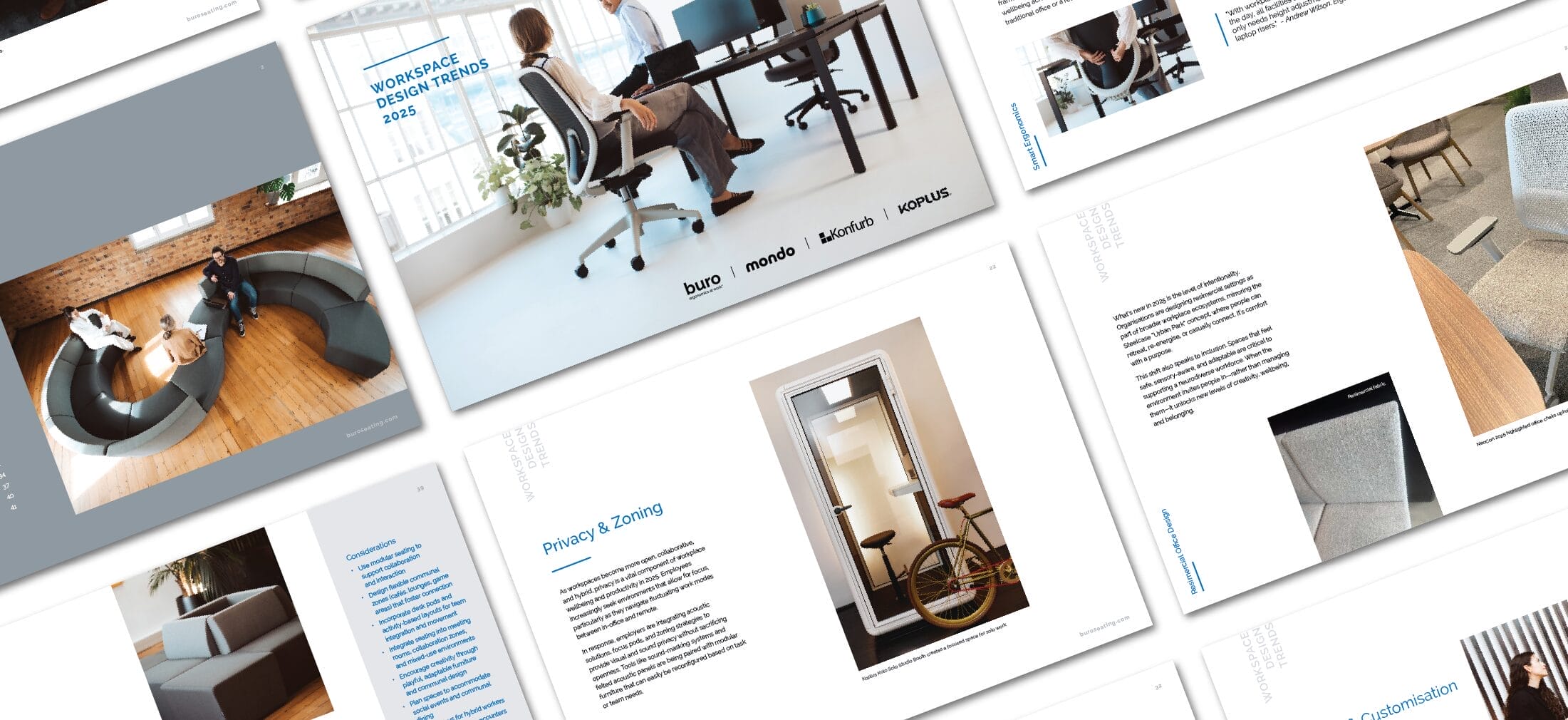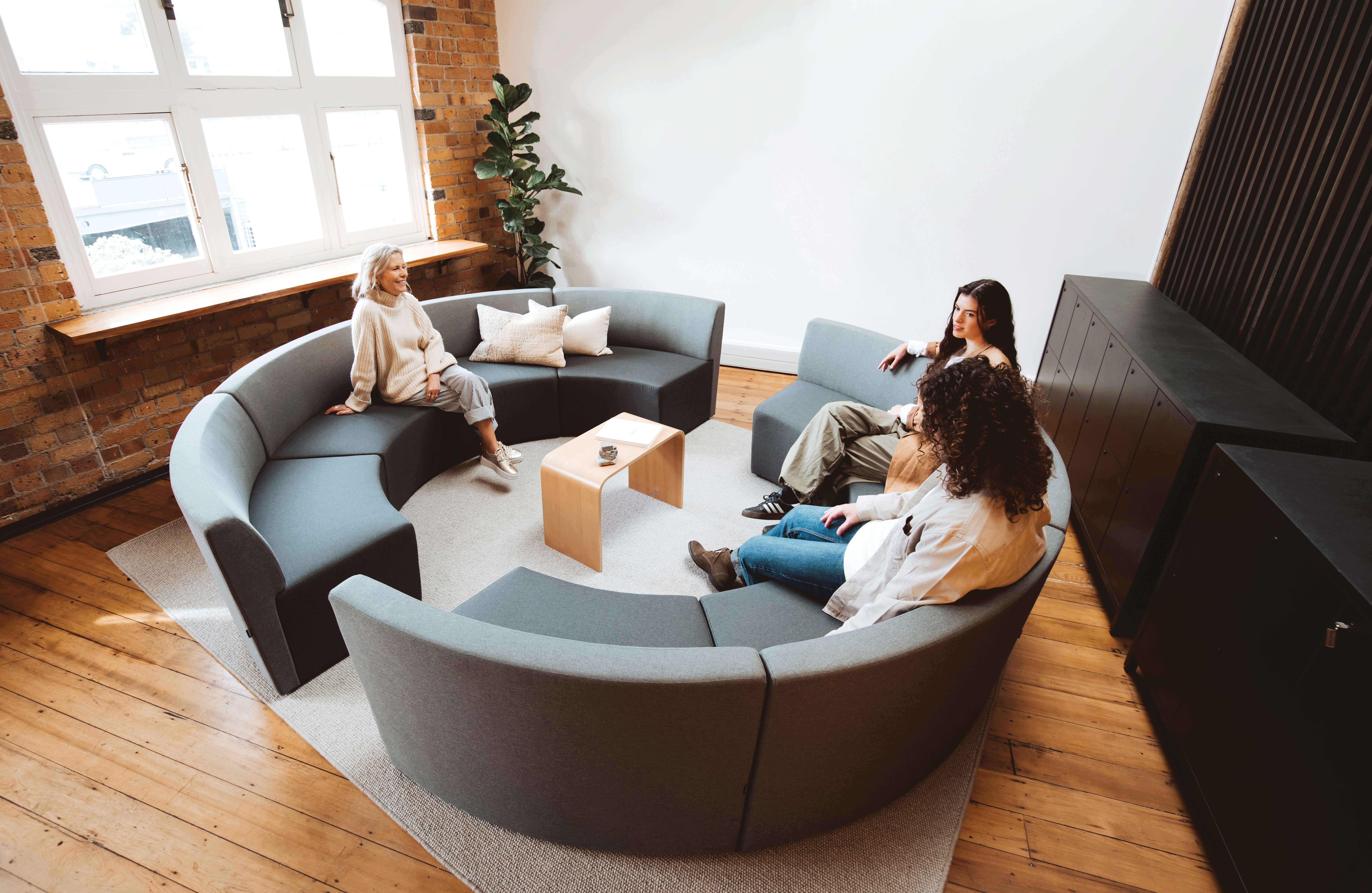Corner offices in the ’60s, cubicles in the ’80s, open-plan layouts in the 2000s, and the hybrid model that we are well versed with today.
If you’ve ever wondered what’s behind the constant evolution of workplace design, join the club! Each year, the Buro team dives into the latest research and insights from our expert interviews to uncover the trends shaping how we work.
So, where are offices headed next? Our 2025 Workplace Design Trends Report points to a future that’s human-centred, performance-driven, and purpose-led. Read the full report here, or keep scrolling for a snapshot of each key trend.
Trend 1: Being flexible will keep you agile
Between hybrid work, diverse employee needs, and a growing emphasis on movement, workplaces are now expected to adapt as quickly as the teams using them.
What does this look like? Think modular furniture and moveable walls. Meeting rooms that can transform into focus zones, and lounges that double as collaborative hubs. Adjustable lighting, desks, and office chairs that give people choice and autonomy.
Take the Buro Mentor, an intuitive office chair that responds to each user’s weight and movement, making it ideal for home offices and shared workspaces.
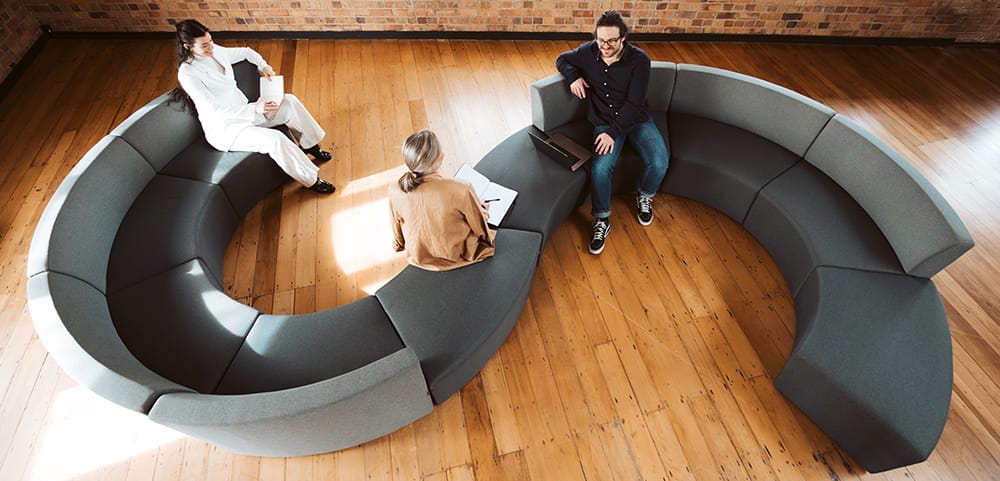
The Konfurb Arco series is an agile modular seating system, offering exceptional design and versatility.
Trend 2: Prioritise prevention over treatment with smart ergonomics
You’re probably familiar with chairs that have adjustable levers and mesh backs, but smart ergonomics take things further. This technology helps design seating that supports your spine, promotes healthy circulation, and keeps your muscles engaged, reducing strain before it starts.
With Buro Dynamic Intelligence™ technology that adapts to your body in real time, the Buro Force is a prime example of how smart ergonomics can make every workday healthier and more comfortable.
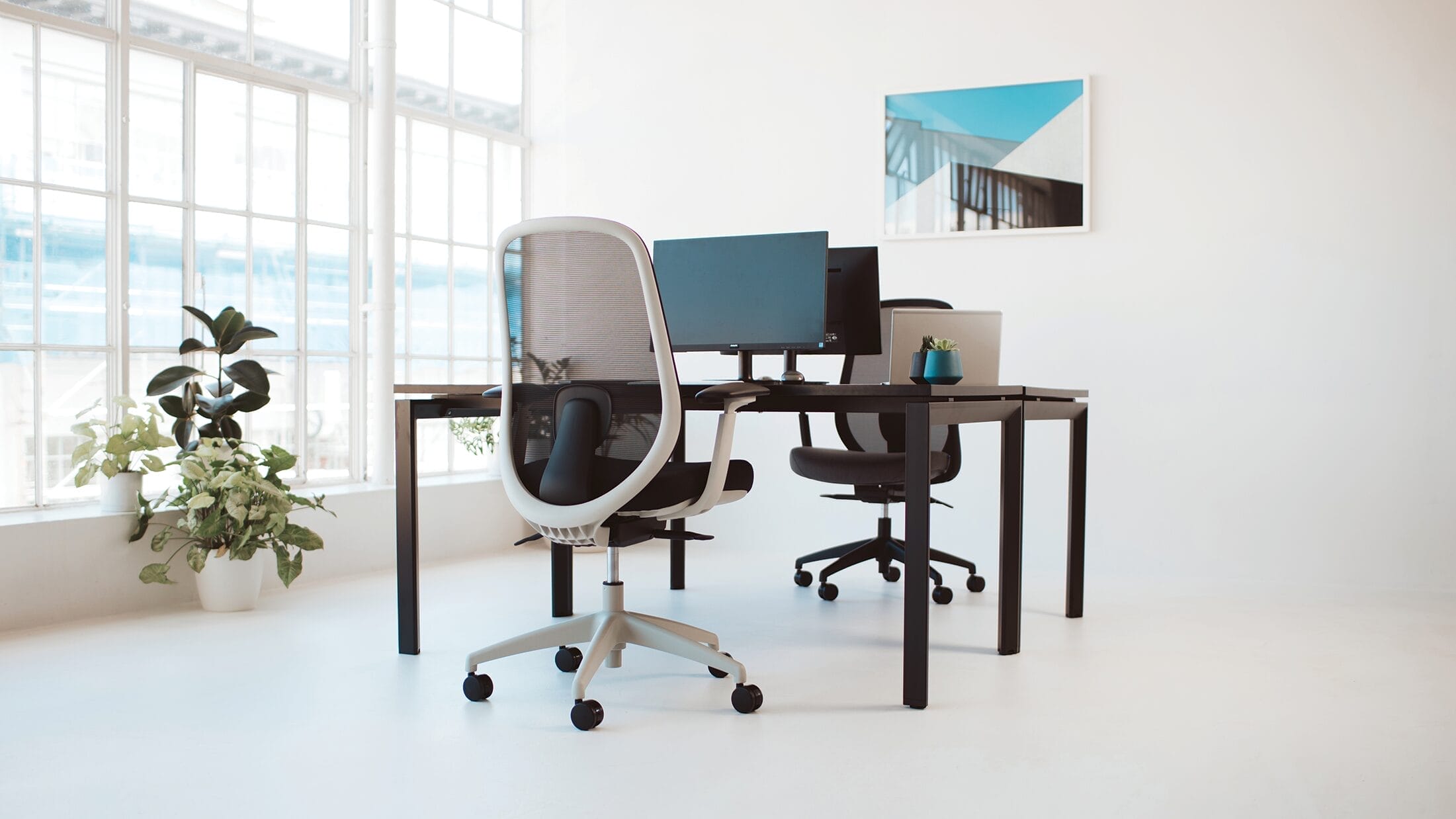
The Buro Force adapts to your body with height-adjustable lumbar support and Buro Dynamic Intelligence™ technology.
Trend 3: Championing neurodiversity through workplace design
A truly inclusive workplace celebrates all kinds of skills, personalities, and perspectives, and that includes neurodiverse employees. If you live with autism, ADHD, or sensory sensitivities, the way an office is designed can have a huge impact on how you feel at work.
Helpful design features include:
- Sensory zoning to separate high-energy areas from low-stimulation spaces.
- Private pods and focus rooms for quiet retreat.
- Adjustable lighting to suit individual preferences.
- Inclusive signage and adaptable furniture that make your workspace safe and welcoming.
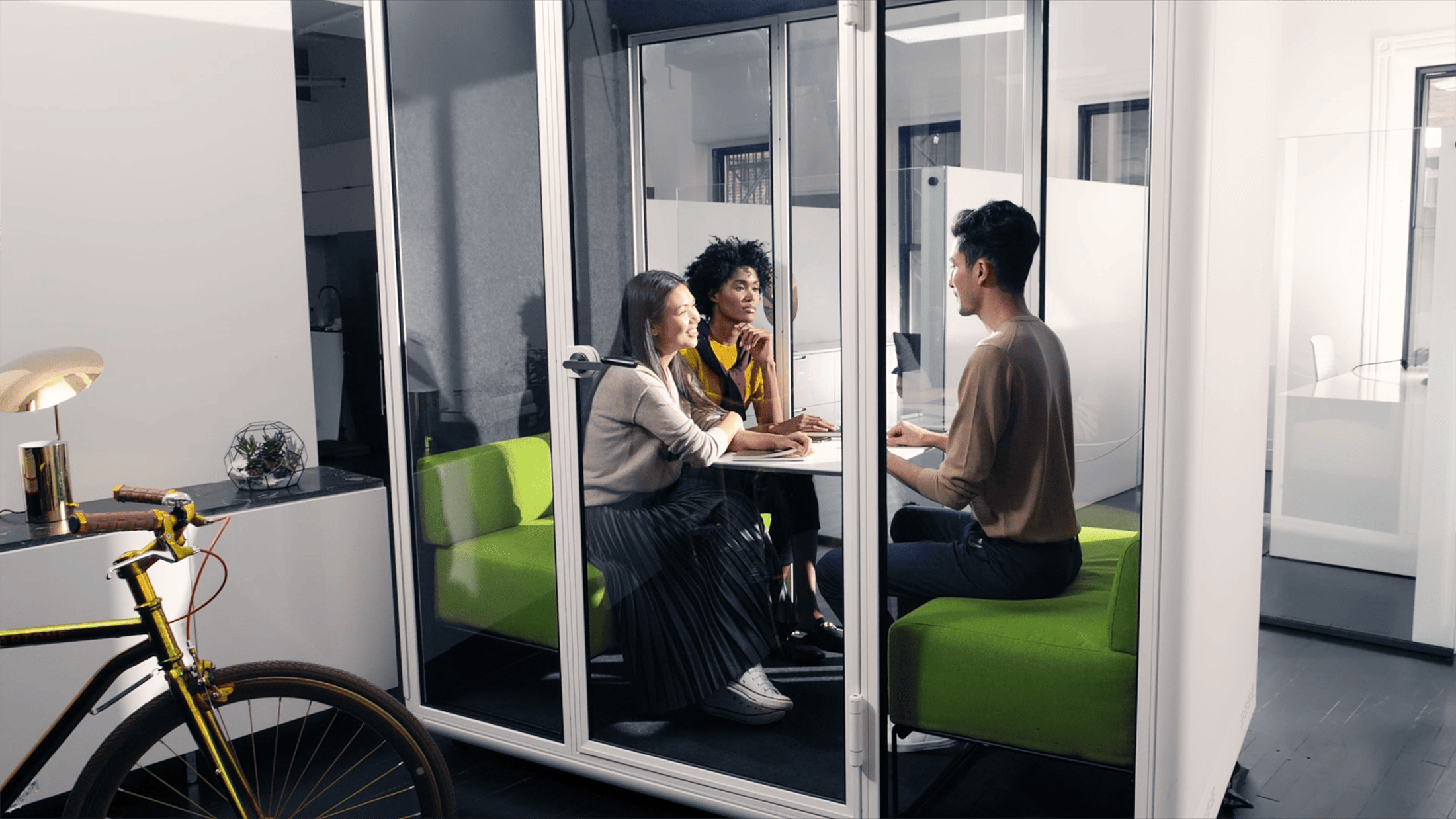
Kolo Duo meeting booth can be used as an office wellbeing space.
Trend 4: Workplaces want to address the challenges of hybrid work
Nearly half of remote-capable employees now work in a hybrid model. While the flexibility hybrid work offers is great, it also raises challenges around connection, access to leadership, and wellbeing support.
The goal is not just to allow hybrid work, but design for it: smart meeting rooms, AI-powered video calls, and cloud tools that keep your team in sync. Workplace analytics can reveal how your space is being used, and clear policies for remote work keep everyone on the same page.

While the flexibility hybrid work offers is great, it also raises challenges around connection
Trend 5: Biophilic design has moved into the mainstream
First recognised in the 1980s as a way to connect people with nature, biophilic design moved from niche wellness fad to mainstream workplaces in the mid-2010s. Today, it’s a core design strategy proven to boost mood and productivity.
And it’s no longer about a lonely potted plant: modern offices are leaning into lush living walls, moss installations, and natural materials like timber, stone, and linen. Acoustic panels feature nature-inspired textures and patterns, while circadian lighting mimics sunlight when windows can’t provide enough of the real thing.

Trend 6: Sustainability is woven into the workplace
Environmental accountability is top of mind for many of us, and in office design, that means considering how furniture is sourced, produced, and maintained.
We’re seeing a shift towards:
- Renewable, responsibly sourced materials like recycled plastics, FSC® certified timber, and renewable textiles like bamboo and wool blends.
- Healthier finishes and processes like low-VOC finishes, water-based adhesives, and energy-efficient manufacturing.
- Longer product lifespans that help you reach your environmental goals.
The Buro Tidal series proves you don’t have to choose between sustainability and style.This Australian-made ergonomic office chair is upholstered in Sustainable Living Fabrics that are GECA certified and Carbon Neutral.
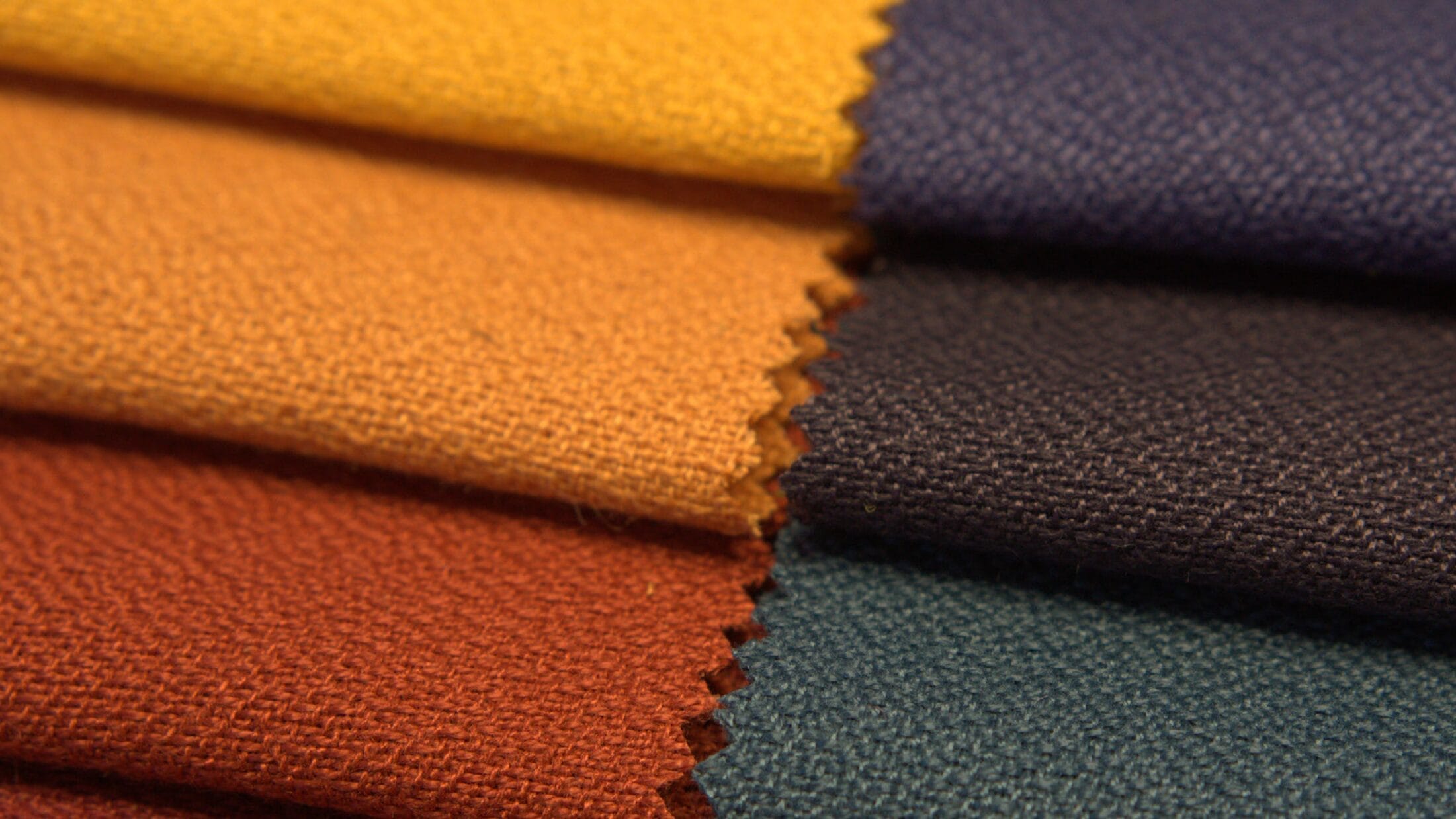
Trend 7: Privacy is as important as ever
Open-plan offices are great for collaboration, but you still need spaces to work without distraction. Popular solutions include:
- Acoustic panels, focus pods, and zoning that create quiet, private areas.
- Digital tools such as on-demand booking systems and controlled-access areas are used to manage interruptions.
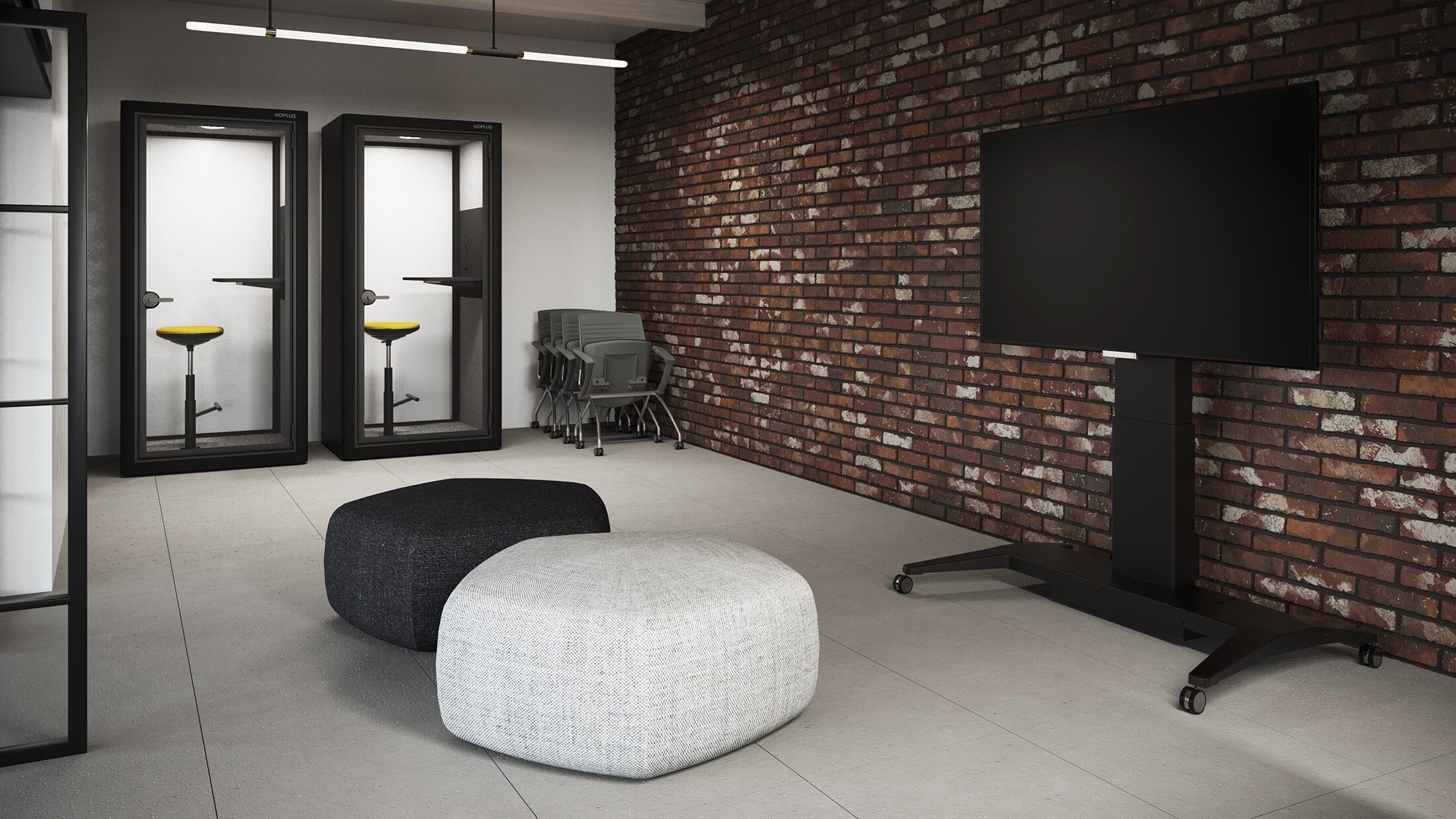
Koplus Milli Stand Booths create quiet, private areas.
Trend 8: Intentionality adds a new layer to resimercial office design
What began as a way to soften commercial spaces has evolved into a purposeful approach that blends comfort with productivity. Resimercial office design has matured past an aesthetic and into a strategy to pair domestic warmth with commercial durability.
We saw plenty of examples at NeoCon 2025, from sculpted tub chairs to soft-edged sofas, and comfy resimercial-style seating equipped with embedded power modules and smart ergonomics.
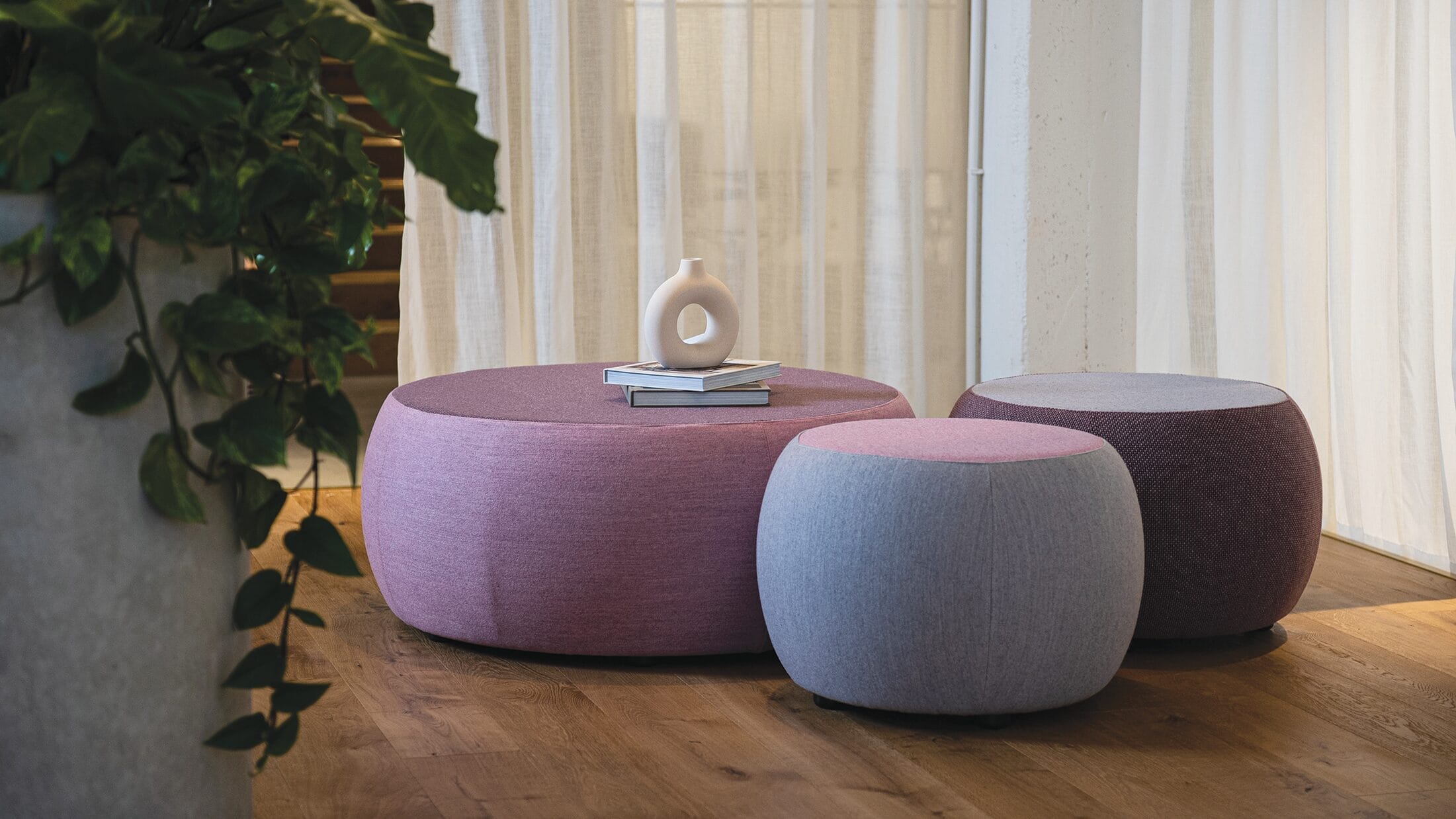
The Konfurb Halo and Konfurb Gem ottomans.
Trend 9: Technology is improving productivity and wellbeing
Workplace tech and AI are being built into the working environment to help you feel good and perform well. This includes sensor-enabled chairs and desks that track posture and prompt you to move, smart meeting rooms that make hybrid catch-ups effortless, and tools that fit your workflow instead of disrupting it.
The Konfurb Luna seating range combines minimalist styling and ergonomic adjustability.

Konfurb Luna office chairs.
Trend 10: Calming colour palettes take centre stage
Commercial palettes are shifting towards grounded tones like oatmeal, flax, mushroom, sage, and clay. These trending colours soothe the nervous system, nod to sustainability, and offer timeless visual richness. Dive deep into colour trends here.

Trend 11: Softer shapes create inviting spaces
Office furniture is losing its hard edges in favour of curved lines, rounded corners, and organic forms that bring openness and flow. Cocoon-like seating, circular collaboration zones, and lounge-inspired pieces foster a sense of safety, comfort, and relaxed social interactions.
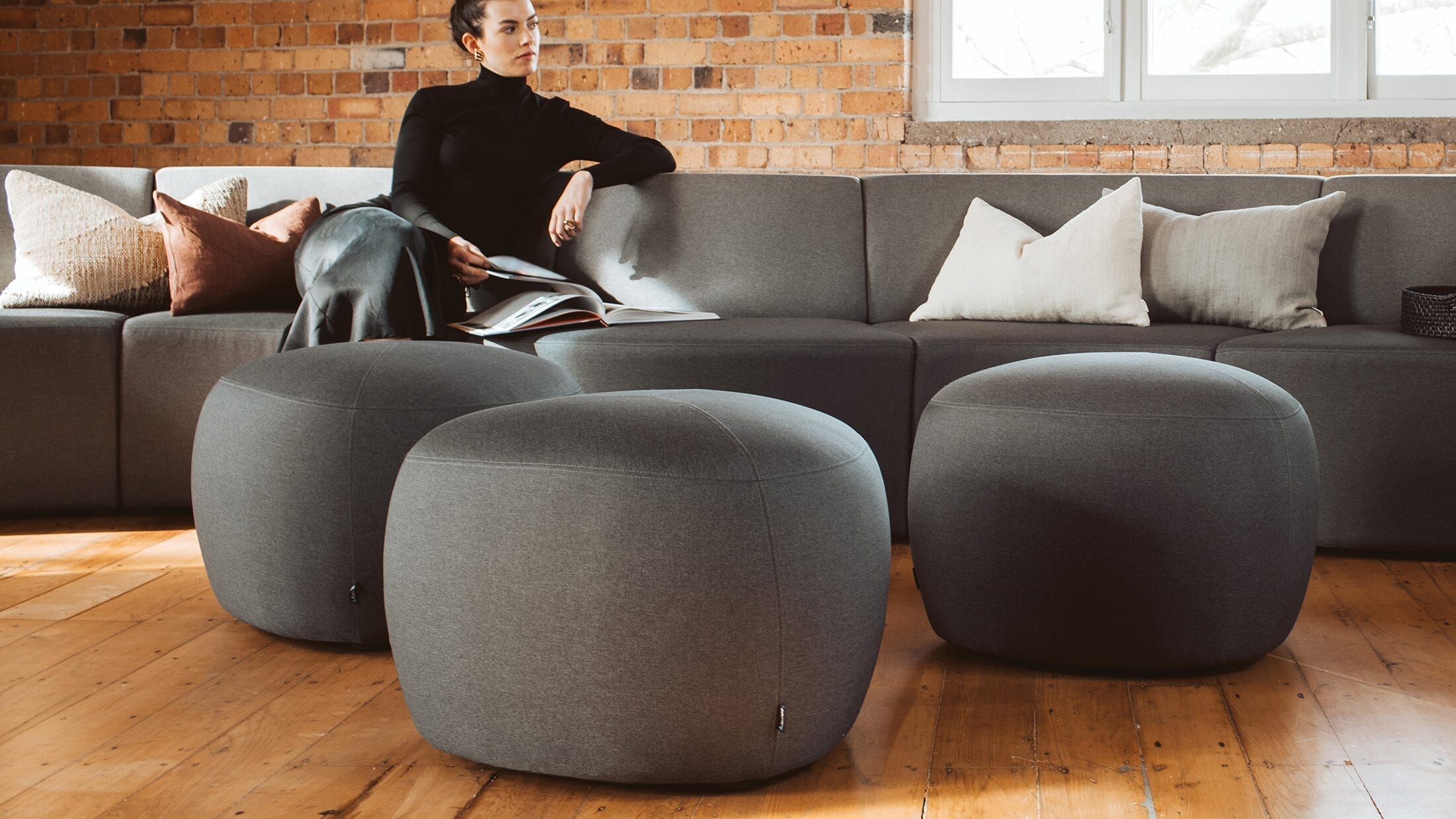
Konfurb Gem ottomans are part of the Konfurb Arco series..
Trend 12: Modular seating is a multi-purpose design tool
Comfy and easy to move, modular seating like the versatile Konfurb Arco series creates defined zones, adapts to changing team dynamics, and encourages movement.

How does your workplace compare?
Were you nodding along with these trends, or did any take you by surprise? Whether you want to embrace biophilic design, add privacy pods or explore the world of smart ergonomics, speak to the office furniture specialists at Buro.

